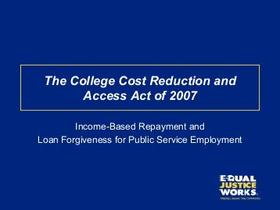- James Sprunt is a comprehensive, open door community college that responds to the needs of Duplin and surrounding counties by enabling a diverse population of adults to attain their personal, academic and career goals; by collaborating and partnering with area businesses and industries in meeting their training and retraining needs; by enhancing the educational, cultural, and economic development of the service area; and by improving the quality of life in the community.
School Highlights
James Sprunt Community College serves 1,634 students (27% of students are full-time).
The college's student-teacher ratio of 8:1 is lower than the state community college average of 13:1.
Minority enrollment is 58% of the student body (majority Hispanic and Black), which is more than the state average of 48%.
Quick Facts (2025-26)
- Enrollment: 1,634 students
- In-state tuition: $2,374
- Out-state tuition: $8,526
- Student-teacher ratio: 8:1
- Minority enrollment: 58%
- Source: Integrated Postsecondary Education Data System (IPEDS)
Top Rankings
James Sprunt Community College ranks among the top 20% of public schools in North Carolina for:
Category
Attribute
Diversity
School Resources
School Overview
The teacher population of 213 teachers has stayed relatively flat over five years.
James Sprunt Community College
(NC) Community College Avg.
Carnegie Classification
Associate's Colleges: High Transfer-Mixed Traditional/Nontraditional
Associate's Colleges: Mixed Transfer/Career & Technical-High Nontraditional
Institution Level
At least 2 but less than 4 years
At least 2 but less than 4 years
Institution Control
Public
Public
Total Faculty
213 staff
256 staff
School Calendar
Student Body
The student population of James Sprunt Community College has grown by 29% over five years.
The student-teacher ratio of 8:1 has increased from 6:1 over five years.
The James Sprunt Community College diversity score of 0.69 is more than the state average of 0.66. The school's diversity has stayed relatively flat over five years.
Total Enrollment
1,634 students
2,579 students
Student-Teacher Ratio
8:1
13:1
# Full-Time Students
439 students
766 students
# Part-Time Students
1,195 students
1,813 students
# Enrollment Undergraduate
163 students
316 students
# Full-Time Undergraduate Students
439 students
766 students
# Full-Time Graduate Students
n/a
22 students
# Part-Time Undergraduate Students
1,195 students
1,990 students
# Part-Time Graduate Students
n/a
3 students
Total Dormitory Capacity
n/a
717 students
% American Indian/Alaskan
1%
1%
% Asian
1%
3%
% Hispanic
26%
13%
% Black
25%
21%
% White
42%
52%
% Hawaiian
n/a
1%
% Two or more races
2%
3%
% Non Resident races
1%
1%
% Unknown races
2%
5%
Diversity Score
0.69
0.66
College Completion Rate (Students who graduate in less than 4 years)
35%
37%
College Completion Rate (Students who graduate in 4 years or more than 4 years)
n/a
43%
Average Graduate Earnings (10 Years)
$27,300
$27,500
Tuition and Acceptance Rate
The public in-state tuition of $2,374 is less than the state average of $3,915. The in-state tuition has declined by 7% over four years.
The public out-state tuition of $8,526 is less than the state average of $9,508. The out-state tuition has stayed relatively flat over four years.
In-State Tuition Fees
$2,374
$3,915
Out-State Tuition Fees
$8,526
$9,508
Tuition Notes
additional fees
% Students Receiving Some Financial Aid
96%
82%
Median Debt for Graduates
$7,847
$10,500
Median Debt for Dropouts
$4,497
$5,846
Acceptance Rate
n/a
82%
SAT Reading
n/a
488
SAT Math
n/a
498
ACT Composite
n/a
20
ACT English
n/a
13
ACT Math
n/a
16
Source: 2024 (or latest year available) Integrated Postsecondary Education Data System (IPEDS) , School Administrators
School Notes
- The College's main campus is located in the center of Duplin County, North Carolina, on N.C. Highway 11 South near Kenansville. The 52-acre landscaped campus provides an attractive setting for an educational and cultural center for students and the community. The Kenansville campus is comprised of six main buildings, housing administrative offices, classrooms, laboratories, vocational shops, library, cafeteria and student center. JSCC offers a two-year college transfer program for students who want to pursue a four-year baccalaureate degree at a senior college or university. The program includes required freshman- and sophomore-level courses in English composition, humanities/fine arts, social/behavioral sciences, natural sciences/mathematics and physical education. In addition, students may take college transfer electives selected to meet their individual needs and interests and the requirements of the specific major areas of study. JSCC is accredited by the Commission on Colleges of the Southern Association of Colleges and Schools to award associate degrees, diplomas and certificates.
Frequently Asked Questions
How much does James Sprunt Community College cost?
James Sprunt Community College's tuition is approximately $2,374 for In-State students and $8,526 for Out-State students.
What is James Sprunt Community College's ranking?
James Sprunt Community College ranks among the top 20% of community college in North Carolina for: Diversity in US community colleges and Percent of students receiving financial aid.
Recent Articles

Community College Success Rates 2025: Outcomes & Trends
Updated 2025 analysis of community college success rates, completion, transfer, costs, enrollment, and strategies that shape student outcomes.

Community Colleges in 2025: Combating Stereotypes with Impact
Updated insights on how community colleges are dispelling myths, growing enrollment, and expanding pathways in 2025.

2025 FAFSA Changes Explained for Community College Students
A comprehensive guide to 2025 FAFSA changes, what community college students must know, new eligibility rules, timelines, and tips to maximize federal aid.










